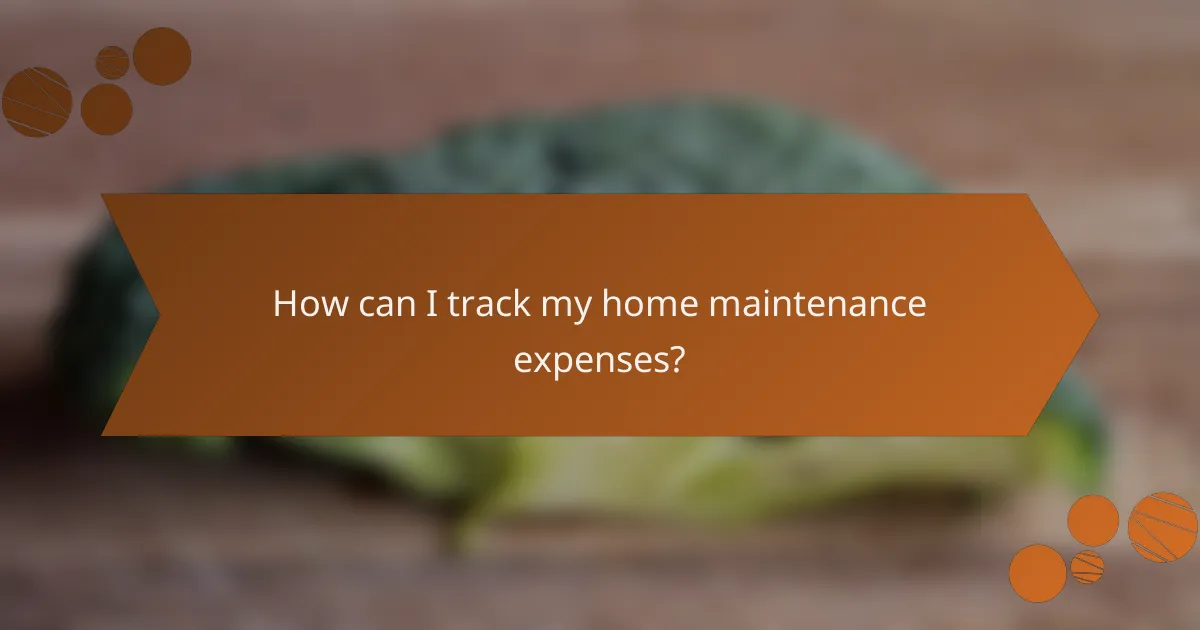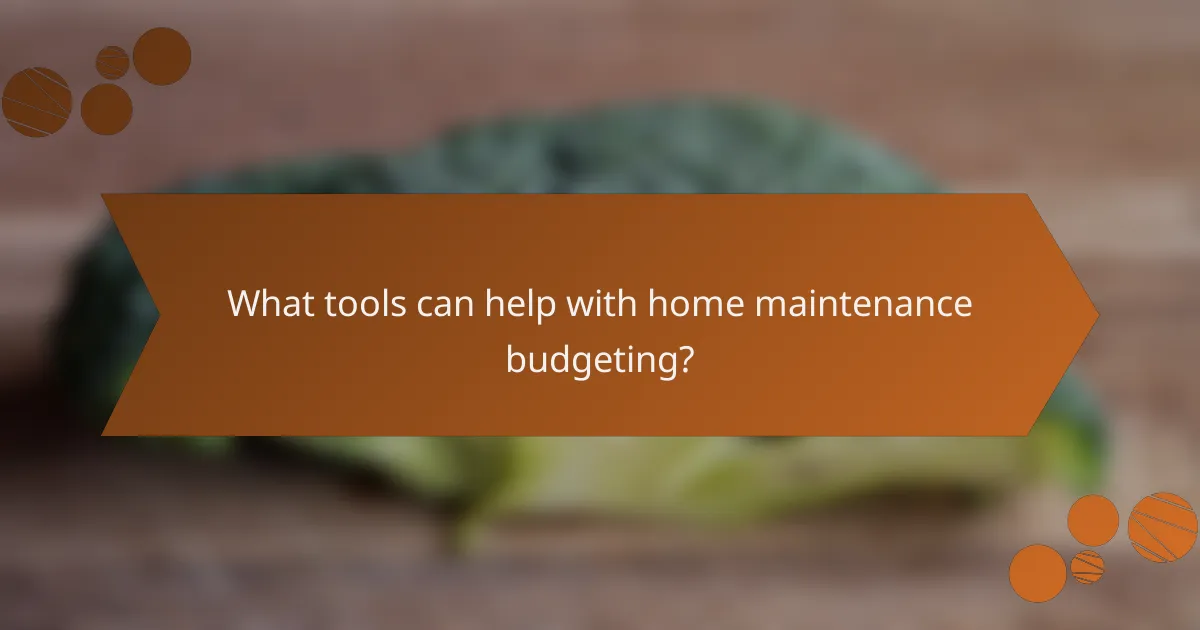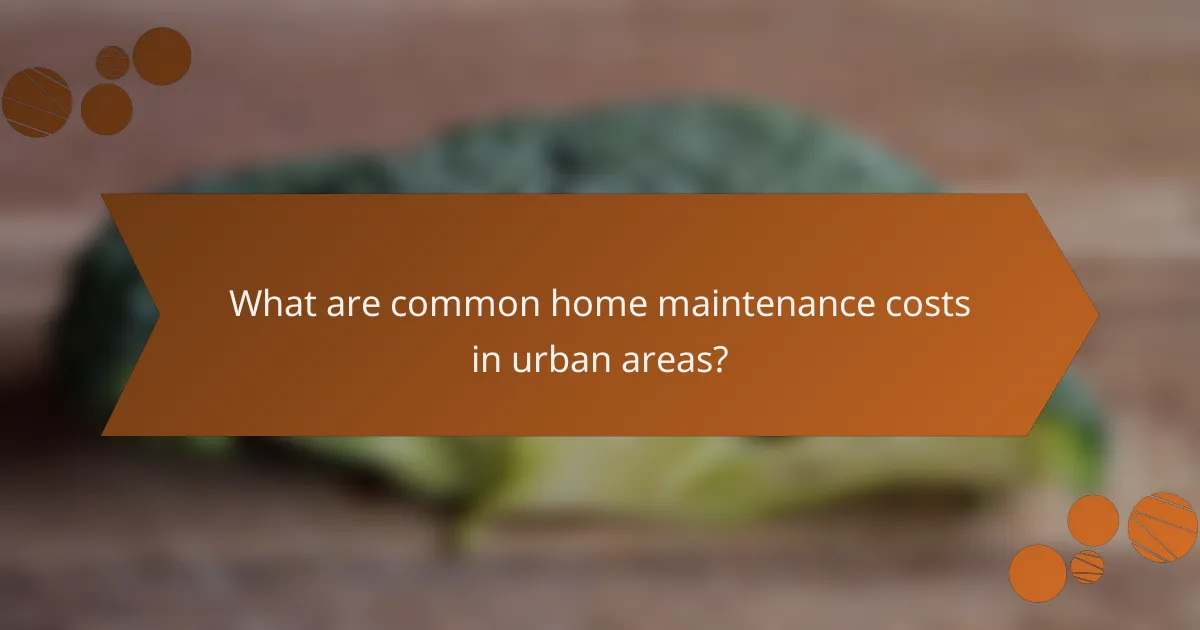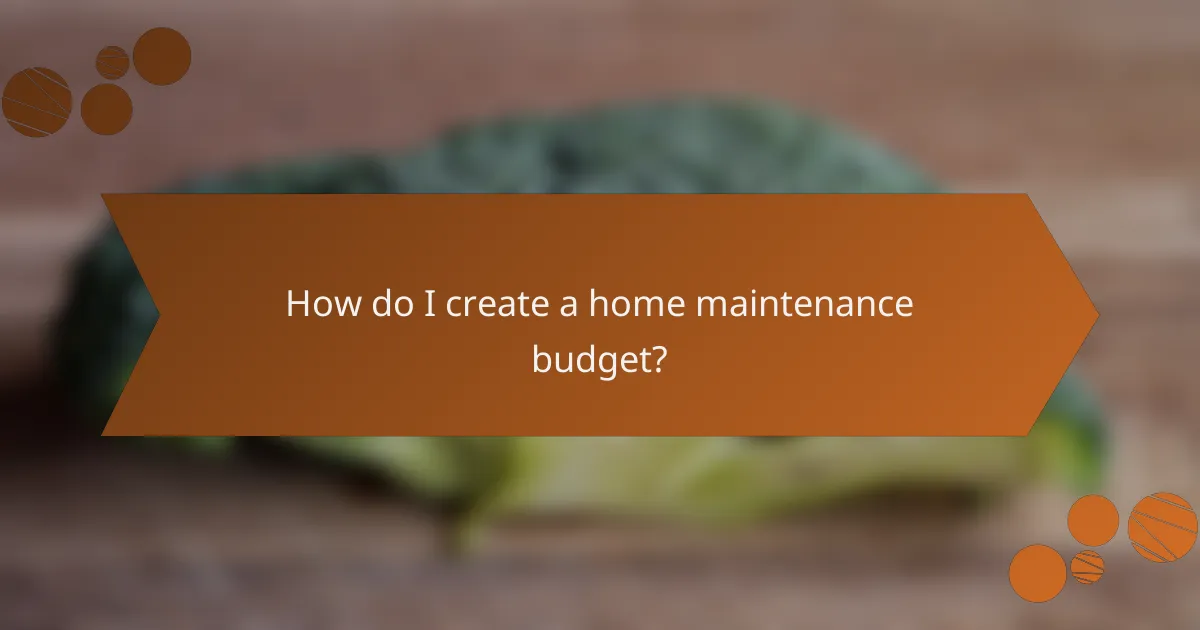Managing a home maintenance budget is essential for homeowners looking to keep their properties in top shape while avoiding unexpected financial burdens. By implementing effective budgeting strategies and utilizing various tools, you can track expenses and plan for future repairs, ensuring your home remains a safe and comfortable environment.

What are effective home maintenance budgeting strategies?
Effective home maintenance budgeting strategies help homeowners allocate funds for necessary repairs and upkeep. By planning ahead, you can avoid unexpected expenses and ensure your home remains in good condition.
Zero-based budgeting
Zero-based budgeting requires you to allocate every dollar of your income to specific expenses, including home maintenance. Start with a clean slate each month, assessing your needs and prioritizing repairs and maintenance tasks based on urgency and importance.
This method encourages you to scrutinize every expense, ensuring that you only spend on what truly matters. It can be particularly useful for managing irregular costs associated with home upkeep.
50/30/20 rule
The 50/30/20 rule divides your income into three categories: 50% for needs, 30% for wants, and 20% for savings and debt repayment. For home maintenance, consider allocating a portion of the 50% needs category specifically for repairs and upkeep.
This approach simplifies budgeting by providing a clear framework. For example, if your monthly income is $3,000, you might set aside $300 to $600 for home maintenance, depending on your overall needs.
Envelope budgeting
Envelope budgeting involves using physical or digital envelopes to allocate funds for different categories, including home maintenance. Each envelope contains a set amount of money that you can spend only on that category.
This method helps prevent overspending by visually tracking your budget. You can create envelopes for various maintenance tasks, such as plumbing repairs, painting, or landscaping, ensuring you stay within your limits.
Prioritizing essential repairs
When budgeting for home maintenance, prioritize essential repairs that impact safety and functionality. Focus on issues like roof leaks, electrical problems, or plumbing failures, as these can lead to more significant damage if not addressed promptly.
Consider creating a list of repairs ranked by urgency and cost. This way, you can allocate funds effectively and ensure that critical issues are resolved before less urgent tasks.
Annual maintenance checklist
An annual maintenance checklist helps you plan and budget for regular upkeep tasks throughout the year. Include seasonal tasks like gutter cleaning, HVAC servicing, and exterior painting to maintain your home’s condition.
By scheduling these tasks, you can spread costs over the year and avoid large, unexpected expenses. For instance, budgeting $100 to $200 quarterly for routine maintenance can help you stay prepared for upcoming needs.

How can I track my home maintenance expenses?
Tracking home maintenance expenses involves recording all costs related to repairs, upkeep, and improvements. This helps homeowners manage their budgets effectively and plan for future expenses.
Using budgeting apps like Mint
Budgeting apps such as Mint allow you to categorize and monitor your home maintenance expenses in real-time. You can link your bank accounts and credit cards to automatically track spending, making it easier to see where your money goes.
To get started, create a specific category for home maintenance within the app. Set monthly or annual budgets for this category to help control spending and identify trends over time.
Spreadsheets for expense tracking
Using spreadsheets is a flexible way to track home maintenance expenses. You can create a simple table with columns for the date, description, category, and amount spent. This allows for easy customization based on your specific needs.
Consider using formulas to calculate totals and averages, which can help you understand your spending patterns. Regularly updating your spreadsheet will provide a clear overview of your financial commitments related to home upkeep.
Home maintenance software options
Home maintenance software offers specialized tools for tracking expenses, scheduling repairs, and managing projects. Programs like HomeZada or Buildium provide comprehensive features tailored to homeowners and property managers.
When selecting software, look for options that allow you to set reminders for routine maintenance tasks and track costs associated with each project. This can help you stay organized and avoid unexpected expenses.

What tools can help with home maintenance budgeting?
Several tools can assist homeowners in effectively budgeting for maintenance costs. These tools range from calculators to specialized apps that help track expenses and plan for future repairs.
Home maintenance calculators
Home maintenance calculators are online tools that estimate the annual costs associated with maintaining a home. They typically consider factors like the home’s size, age, and condition to provide a rough estimate of expected expenses.
Using these calculators can help homeowners set aside an appropriate budget. For example, a common rule of thumb suggests budgeting 1% to 3% of the home’s value annually for maintenance.
Budgeting apps for homeowners
Budgeting apps designed for homeowners offer features tailored to tracking home-related expenses. These apps often allow users to categorize spending, set financial goals, and receive reminders for upcoming maintenance tasks.
Popular options include Mint, HomeZada, and YNAB (You Need A Budget). Each app has unique features, so it’s beneficial to explore a few to find the one that best fits your needs.
Expense tracking tools
Expense tracking tools help homeowners monitor their spending over time, making it easier to identify patterns and adjust budgets accordingly. These tools can be simple spreadsheets or more complex software solutions.
When choosing an expense tracking tool, consider ease of use and integration with other financial management systems. Regularly updating your expenses can prevent overspending and ensure that you stay within your maintenance budget.

What are common home maintenance costs in urban areas?
Common home maintenance costs in urban areas can vary significantly based on location, property type, and specific needs. Homeowners should budget for regular upkeep, which often includes plumbing, HVAC, and roofing expenses, to avoid unexpected financial strain.
Average costs for plumbing repairs
Plumbing repairs in urban areas typically range from a few hundred to over a thousand dollars, depending on the severity of the issue. Common repairs include leaky faucets, clogged drains, and broken pipes. For instance, fixing a leaky faucet might cost around $150, while major pipe repairs could exceed $1,000.
Homeowners should consider regular inspections to catch minor issues before they escalate. It’s advisable to have a trusted plumber on hand for emergencies, as response times can vary significantly in busy urban settings.
Typical HVAC maintenance expenses
HVAC maintenance costs usually range from $100 to $300 annually for routine servicing. This includes inspections, filter changes, and minor repairs. Neglecting regular maintenance can lead to higher energy bills and costly repairs, making it crucial to stay on top of HVAC upkeep.
Additionally, urban homeowners should be aware of local regulations regarding HVAC systems, as some cities may require specific certifications for installations or repairs. Investing in a service plan can help manage costs and ensure timely maintenance.
Roofing repair cost estimates
Roofing repairs can vary widely, with costs typically ranging from $300 to several thousand dollars, depending on the extent of the damage. Minor repairs, such as fixing a few shingles, may cost around $300, while significant issues like leaks or structural damage can exceed $2,000.
Urban homeowners should regularly inspect their roofs, especially after severe weather. It’s also wise to hire licensed contractors who understand local building codes and can provide warranties for their work, ensuring peace of mind and compliance with regulations.

How do I create a home maintenance budget?
Creating a home maintenance budget involves assessing your current home condition, estimating future repair costs, and allocating funds accordingly. This proactive approach helps you manage expenses and prepare for unexpected repairs.
Assessing current home condition
Start by evaluating the state of your home, focusing on key areas such as the roof, plumbing, electrical systems, and appliances. Conduct a thorough inspection to identify any existing issues or potential problems that may require attention in the near future.
Document your findings, noting the age and condition of each component. This will help you prioritize repairs and maintenance tasks, ensuring that you allocate sufficient funds for necessary work.
Estimating future repair costs
Once you have assessed your home, estimate the costs of potential repairs and maintenance. Consider using industry averages; for example, homeowners often allocate about 1-3% of their home’s value annually for maintenance. This can vary based on the age and condition of the property.
To refine your estimates, research local contractors or service providers for quotes on common repairs. Create a list of anticipated expenses, which may include routine maintenance, emergency repairs, and upgrades. This will give you a clearer picture of your financial needs moving forward.
